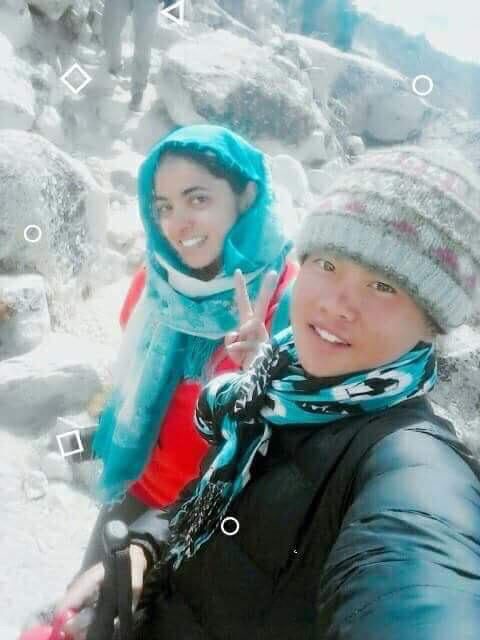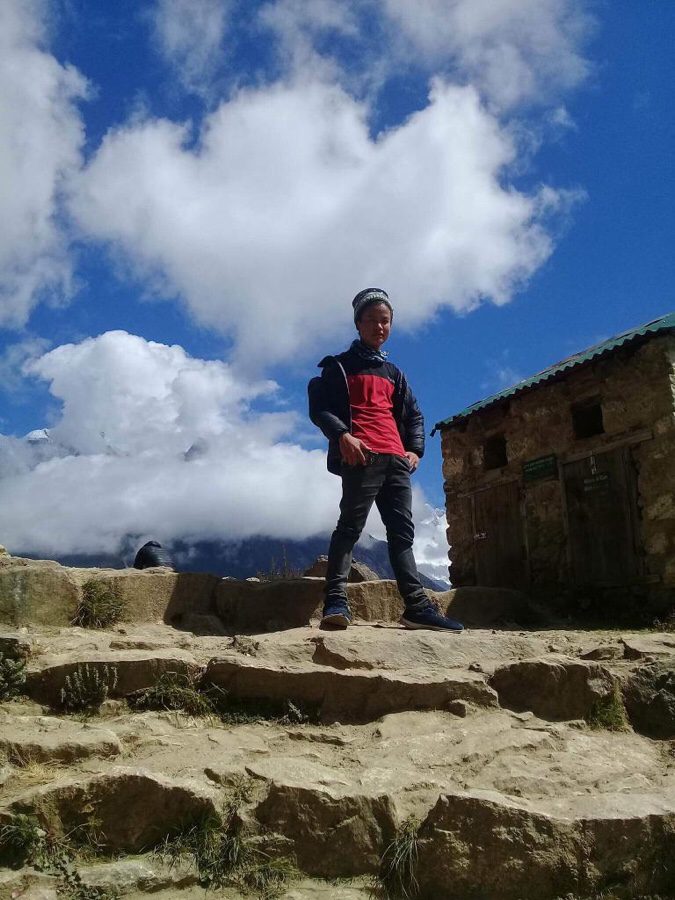Acclimatisation is Very Important: Hiking at High Altitude (2024)
Before undertaking the Mt Everest Base Camp (EBC) hike, I had ventured on several high-altitude treks in the Himalayas, including the Saurkundi Pass. Despite hearing about altitude motion sickness (AMS) while hiking at high altitude, I had never personally encountered it. However, the EBC hike proved to be a stark lesson in the significance of acclimatisation and the need to respect high altitudes. The journey emphasised the critical nature of acclimatisation, as falling ill at such elevations leaves one with limited options. With minimal facilities available, the only recourse in emergencies is evacuation via helicopter.
This narrative aims to underscore the crucial importance of acclimatisation and the need to approach it with the utmost seriousness. Allow me to illustrate this point through a real-life example involving my porter, Ashish, who experienced symptoms of high altitude sickness.
This article may contain affiliate links, meaning if you decide to purchase via my links, I may earn a commission at no additional cost to you. For complete information, please see our affiliate disclaimer here.
Page Contents
What is Altitude Motion Sickness?
Altitude Motion Sickness, commonly known as AMS, arises when one ascends too rapidly to higher altitudes, hindering the body’s ability to acclimatise to changes in oxygen levels and air pressure.
Altitude sickness may manifest when an individual endeavors to ascend a mountain exceeding 8000 feet, impacting the human brain.
Symptoms of AMS encompass headaches, vomiting, insomnia, and diminished physical performance. While AMS is often mild, characterised by slight headaches, it has the potential to escalate into a life-threatening condition. The recommended course of action to address AMS is an immediate descent to lower altitudes rather than progressing further to higher levels.
Story of How Important Acclimatisation is
This is a firsthand account recounting a real-life experience that unfolded during my friend’s and my trek to Everest Base Camp (EBC) in Nepal.
Day 1 of the incident at Lobuche
In the morning, my guide Lal entered my room, inquiring about the status of our packed bags. Since my friend Vijay and I were still in the process of packing, Lal urged us to expedite the process so that our porter Ashish could swiftly transport the bags to a lower altitude camp. As Ashish stood behind Lal, we learned that he was experiencing a headache, a clear symptom of altitude sickness. Despite our attempt to provide relief with Disprins, he continued to feel unwell and expressed a desire to vomit.

After a while, Ashish claimed to be feeling better, prompting Lal to instruct him to proceed to a lower altitude camp as quickly as possible. Convinced that it was the prudent course of action, we bid farewell to Ashish as he departed from Lobuche. Upon our arrival at Pangboche later that night, there was no sign of Ashish. Assuming he was resting and recuperating somewhere, we held onto the hope that he was feeling better.
Day 2 of the incident at Pangboche
In the early morning, Lal woke us with distressing news that Ashish’s condition had worsened, and he urgently needed to descend to a lower camp. Lal revealed that Ashish had lost consciousness, and his oxygen levels had plummeted to around 30.

The gravity of the situation prompted us to consider two immediate options after Lal’s departure. The first was to call for a rescue helicopter to airlift Ashish to the nearest hospital in Lukla (a daunting 20-hour walk from our location). The second was to contact Babu, the Managing Director of Unique Path Trekking, to coordinate the helicopter rescue.
Responding swiftly, Babu arranged for a helicopter, and within half an hour, Ashish was en route to Lukla hospital. Despite the absence of a helipad, the helicopter skillfully landed in a nearby field, facilitating Ashish’s swift transfer to medical care.
Note: The emergency airlift service at EBC incurs a cost of approximately USD 500 per person and must be arranged through your tour agency or the tea house where you are currently accommodated.
Day 4 of the incident at Lukla
Vijay and I made a visit to Lukla hospital to check on Ashish’s condition. During our interaction with the nurse and doctor, we learned that upon Ashish’s arrival at the hospital, his oxygen levels had dropped into the 20s, necessitating CPR for nearly seven hours in the emergency ward.
The positive update was that Ashish had been successfully revived, and his oxygen levels had risen to more than 65. Regaining consciousness and engaging in conversation, he was on the path to recovery. Although he still required a few more days for a complete return to normalcy, the progress was promising.
We extend special thanks to the dedicated staff at Lukla hospital, who are doing a commendable job assisting the people of Lukla and neighboring villages. Notably, they provide free treatment to porters and individuals without financial means, offering comprehensive facilities except for surgical treatments.
Ashish’s fortunate outcome serves as a reminder of the critical role timely assistance plays at high altitudes. Altitude should never be underestimated, and I urge anyone embarking on a high-altitude hike to prioritise acclimatisation before ascending to greater heights.

How to Deal with Acclimatisation?
The most effective remedy for managing Altitude Motion Sickness (AMS) is to allow the body sufficient time to rest and acclimatise before progressing to higher elevations. In environments with elevated altitudes, such as Mt Everest Base Camp, individuals typically spend around 48 hours at a single camp before advancing to the next.
To facilitate a smoother acclimatisation process, it is advisable to stay hydrated, avoid consuming oily or salty foods, and focus on a diet rich in potassium, including items such as bananas, green leafy vegetables, potatoes, and tomatoes.
Ensure to check with your doctor before taking any medicine.
You can also take Diamox tablets for acclimatisation based on your doctor’s advise. Throughout our ascent, my friend Vijay and I consistently took Diamox (initiated at least 2 days before reaching high altitude) until we commenced our descent.
It is important to note that some tour agencies prioritise safety measures, ensuring that guides carry portable oxygen cylinders, an oximeter to monitor oxygen levels, and a first aid kit. Unfortunately, our tour guide from Unique Path Trekking did not have these essential tools, putting us at potential risk. The presence of such equipment is crucial for the safety of individuals undertaking high-altitude hikes.
Closing Notes on Acclimatisation While Hiking at High Altitude
Acclimatisation plays a crucial role in high-altitude hikes, and it is imperative not to underestimate its significance. Adequate time should be dedicated to acclimatising at a specific location. Ascending to high altitudes may lead to the accumulation of fluid in the lungs and brain.
How can you support me?
You know how much I love coffee, so you can buy me a coffee – Buy me Coffee!
Or you can purchase from one of the below travel resources without any extra charge to you:
Travel Resources
Book your flight on Skyscanner.com or Trip.com
Reserve your accommodation on Stay22
Reserve your stay at a hostel on HostelWorld
Use RentalCars or DiscoverCars for hiring self-driven cars
Book your tours and travels or purchase tickets on Viator or GetYourGuide
For a universal SIM card, use DrimSim
Buy comprehensive travel insurance on SafetyWing and WorldNomads
If you liked this article and if it was helpful in your planning or travelling, do share, tweet, or pin this post.
Follow me on Instagram | Facebook | YouTube | Twitter | LinkedIn
Do you have a question? Do you want any suggestions and tips for travel, hikes, and scuba dives? Use the Subscription box below to sign up and get updates by email.

